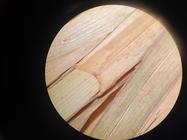Cyperaceae name details
Carex sinomairei H.Lév.
1694208 (urn:lsid:marinespecies.org:taxname:1694208)
unaccepted
Species
terrestrial
Léveillé, H. (1913). Decades plantarum novarum. CIV–CV. <em>Repertorium novarum specierum regni vegetabilis.</em> 11(34-38): 548-552., available online at https://onlinelibrary.wiley.com/doi/10.1002/fedr.19130113404
page(s): 550 [details]
page(s): 550 [details]
Holotype P 00282821
Holotype P 00282821 [details]
Description Caespitosa. Culmi, colore paleaceo, scaberrimi, sulcato-trigoni, striati: folia paleacea, septato-nodosa, scabra; folia...
Description Caespitosa. Culmi, colore paleaceo, scaberrimi, sulcato-trigoni, striati: folia paleacea, septato-nodosa, scabra; folia radicalia fusco-marcescentia; bracteae vis vel non vaginantes, inferior inflorescentiarn superans; spicae masculae 3 lineares, fulvae; femineae 3 (inferior pedunculata vel longe sed erecta) spissae, obtusae vel apice androgynae; squamae femineae gibbosae, brunneae, carena 3-nervata, lanceolatae, utriculo angustiores, in aristam longe utriculum superan tem desinentes; utriculus dense et crispule fulvo-tomentosus, ore conspicuo, glabrato alte et divaricate fisso. [details]
Cyperaceae Working Group. (2025). [see How to cite]. Global Cyperaceae Database. Carex sinomairei H.Lév.. Accessed at: https://www.cyperaceae.org/aphia.php?p=taxdetails&id=1694208 on 2025-09-12
Date
action
by
2024-12-10 11:47:54Z
unchecked
db_admin
![]() The webpage text is licensed under a Creative Commons
Attribution 4.0 License
The webpage text is licensed under a Creative Commons
Attribution 4.0 License
Nomenclature
original description
Léveillé, H. (1913). Decades plantarum novarum. CIV–CV. <em>Repertorium novarum specierum regni vegetabilis.</em> 11(34-38): 548-552., available online at https://onlinelibrary.wiley.com/doi/10.1002/fedr.19130113404
page(s): 550 [details]
basis of record Plants of the World Online (POWO). , available online at https://powo.science.kew.org/ [details]
page(s): 550 [details]
basis of record Plants of the World Online (POWO). , available online at https://powo.science.kew.org/ [details]
Holotype P 00282821 [details]
From editor or global species database
Description Caespitosa. Culmi, colore paleaceo, scaberrimi, sulcato-trigoni, striati: folia paleacea, septato-nodosa, scabra; folia radicalia fusco-marcescentia; bracteae vis vel non vaginantes, inferior inflorescentiarn superans; spicae masculae 3 lineares, fulvae; femineae 3 (inferior pedunculata vel longe sed erecta) spissae, obtusae vel apice androgynae; squamae femineae gibbosae, brunneae, carena 3-nervata, lanceolatae, utriculo angustiores, in aristam longe utriculum superan tem desinentes; utriculus dense et crispule fulvo-tomentosus, ore conspicuo, glabrato alte et divaricate fisso. [details]Diagnosis C. drymophilae Turcz. et C. aristatae Br. affinis, sed utriculo crispule tomentoso statim secernenda. [details]
Translation Similar to Carex drymophila Turcz. and Carex aristata Br., but the densely tomentose perigynia easily distinguishes it. [details]
Translation Cespitose. Stems straw-colored, scabrous, furrowed-triangular, striated; leaves pale, septate-nodulose, scabrous; basal leaves dark, marcescent; bracts strongly sheathing or not sheathing at all, the lower one exceeding the inflorescence; male spikelets 3, linear, tawny; female spikelets, 3 (the lower one stalked or long but erect), thick, obtuse or androgynous at the apex; female scales gibbous, brown, keels 3-veined, lanceolate, narrower at the utricle, ending in an awn well above the utricle; utricle densely and finely tawny-tomentose, with a conspicuous margin, glabrous and strongly split in two. [details]




